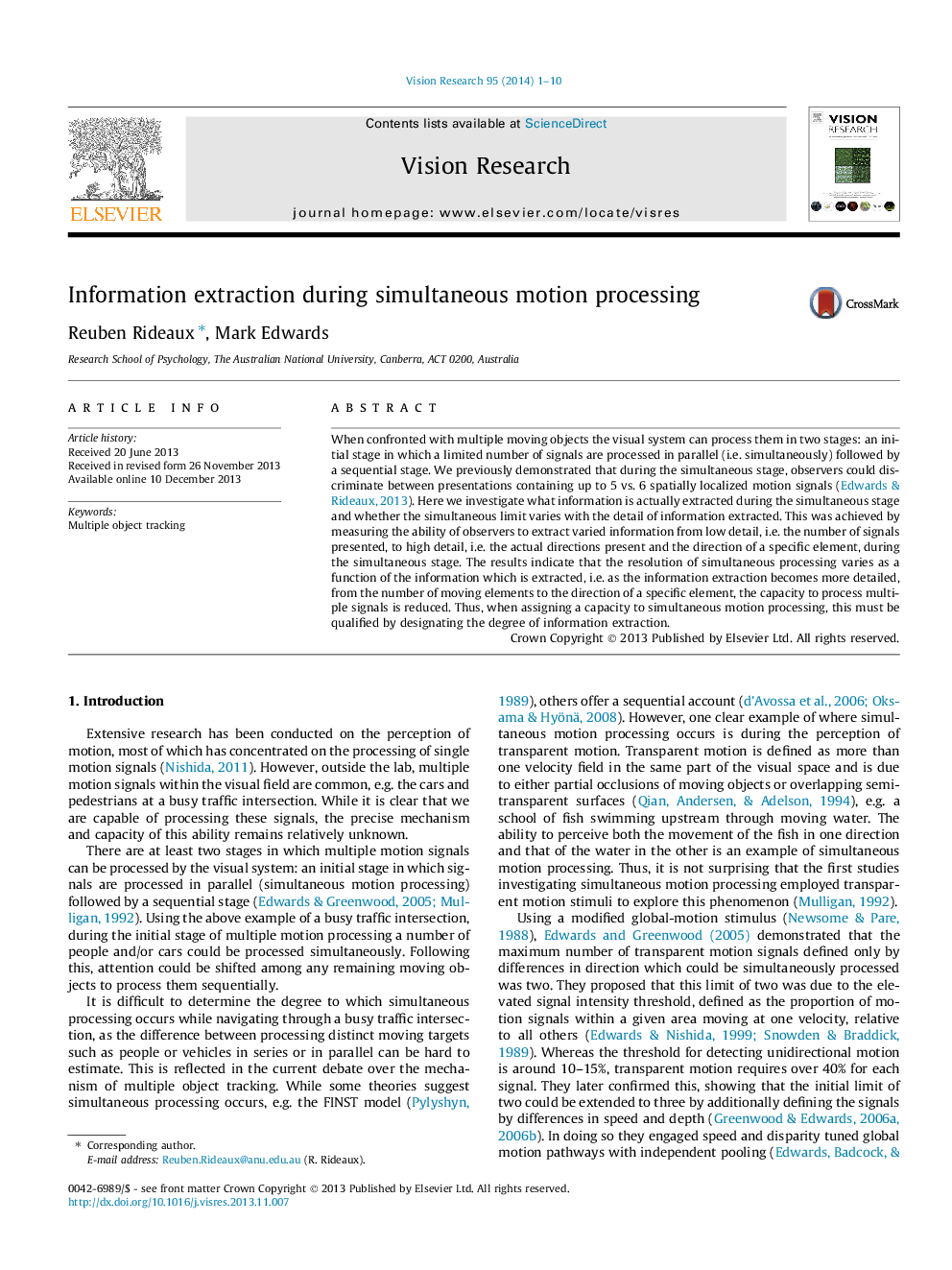| Article ID | Journal | Published Year | Pages | File Type |
|---|---|---|---|---|
| 4033731 | Vision Research | 2014 | 10 Pages |
•We establish that the simultaneous motion processing limit varies.•The presence of up to 4 motion signals can be identified.•Only up to 3 motion directions can be simultaneously perceived.•Those directions can be bound to their corresponding elements.•The simultaneity limit depends upon the detail of the information being extracted.
When confronted with multiple moving objects the visual system can process them in two stages: an initial stage in which a limited number of signals are processed in parallel (i.e. simultaneously) followed by a sequential stage. We previously demonstrated that during the simultaneous stage, observers could discriminate between presentations containing up to 5 vs. 6 spatially localized motion signals (Edwards & Rideaux, 2013). Here we investigate what information is actually extracted during the simultaneous stage and whether the simultaneous limit varies with the detail of information extracted. This was achieved by measuring the ability of observers to extract varied information from low detail, i.e. the number of signals presented, to high detail, i.e. the actual directions present and the direction of a specific element, during the simultaneous stage. The results indicate that the resolution of simultaneous processing varies as a function of the information which is extracted, i.e. as the information extraction becomes more detailed, from the number of moving elements to the direction of a specific element, the capacity to process multiple signals is reduced. Thus, when assigning a capacity to simultaneous motion processing, this must be qualified by designating the degree of information extraction.
